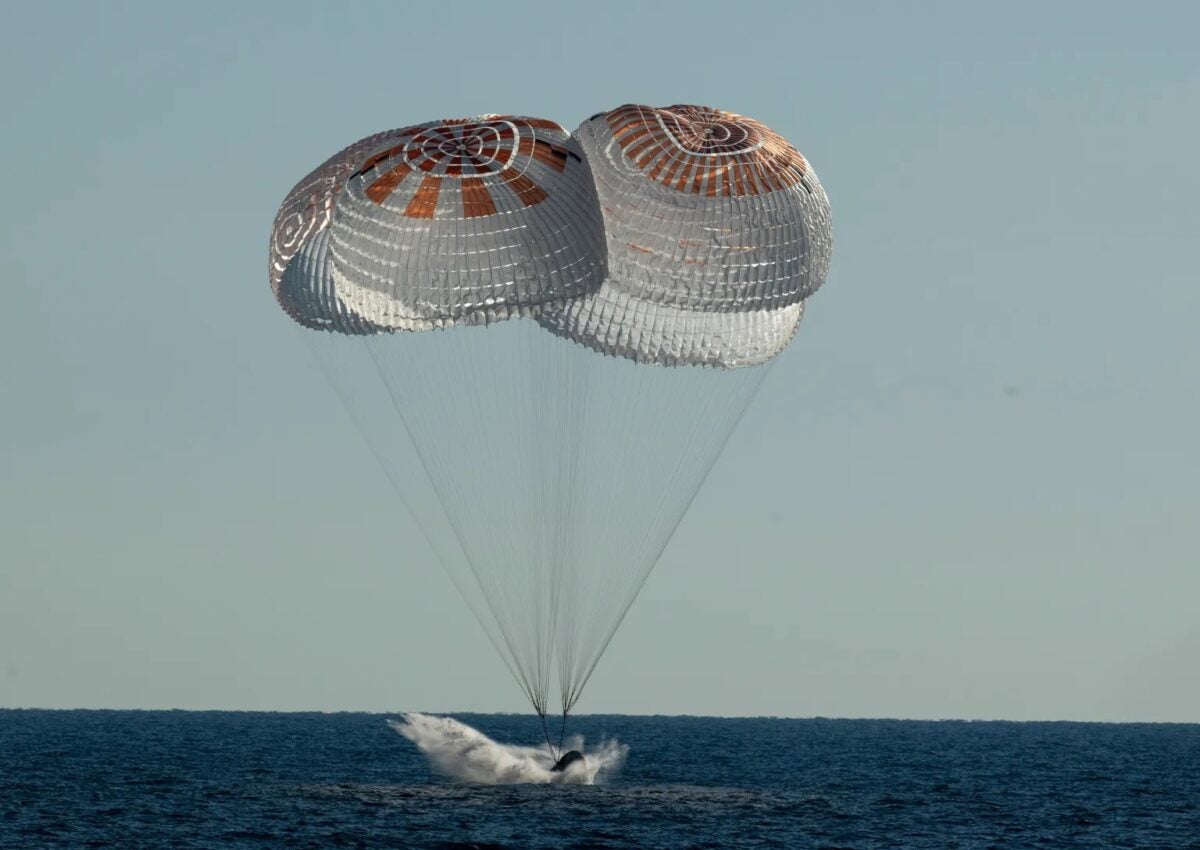
SpaceX's Dragon Freedom crew splashed down with four astronauts on Oct. 14, 2022. Credit: NASA/u003c/strongu003e
On July 21, 1961, for about 15 minutes, the American astronaut Gus Grissom He felt on top of the world, and he truly was.
Grissom manned the Liberty Bell Mission 7a ballistic test flight that launched him through the atmosphere from a rocket. During the test, he sat inside a small capsule and reached a height of more than 100 miles before splashing down in the Atlantic Ocean.
A Navy ship, the USS Randolph, watched the successful end of the mission from a safe distance. Everything had gone according to plan, controllers at Cape Canaveral were jubilant, and Grissom knew he had just entered a VIP club as only the second American astronaut in history.
Grissom stayed inside his capsule and bobbed on the gentle ocean waves. While waiting for a helicopter to take him to the dry deck of the USS Randolph, he finished recording some flight data. But then, things took an unexpected turn. An incorrect command in the capsule's explosives system caused the hatch to openwhich allowed water to flow into the small space. Grissom had also forgotten to close a valve on his spacesuit, so water began to seep into his suit as he struggled to stay afloat.
After a dramatic escape from the capsule, he struggled to keep his head above the surface while signaling to the helicopter pilot that something had gone wrong. The helicopter managed to save him at the last moment. Grissom's near-fatal escape remains one of the most dramatic splashdowns in history. But splashing down remains one of the most common ways astronauts return to Earth. Professor of Aerospace Engineering which studies the mechanisms involved in these phenomena. Fortunately, most landings are not so stressful, at least on paper.
Explanation of the splash
Before it can make a safe landing, a spacecraft returning to Earth You need to slow downWhile returning to Earth, a spacecraft has a lot of kinetic energy. Friction with the atmosphere creates drag, which causes the spacecraft to slow down. Friction converts the spacecraft's kinetic energy into thermal energy, or heat.
All this heat is radiated into the surrounding air, which becomes extremely hot. Since reentry velocities can be several times the speed of sound, the force of the air pushing against the vehicle turns the vehicle's surroundings into a scorching flow of about 2,700 degrees Fahrenheit (1,500 degrees Celsius). SpaceX's massive Starship rocketThis temperature even reaches 3,000 degrees Fahrenheit (almost 1,700 degrees Celsius).
Unfortunately, no matter how quickly this transfer occurs, there is not enough time during reentry for the vehicle to slow down to a speed safe enough to avoid crashing. Therefore, engineers turn to other methods that can slow a spacecraft down during splashdown.
Parachutes are the first option.NASA often uses designs with bright colors, like the orange, Drag parachutes are the first to deploy when the vehicle's speed drops below 700 meters per second (about 2,300 feet per second).
Still, the rocket can't crash into a hard surface. It needs to land somewhere that will cushion the impact. Researchers discovered early on that water is an excellent shock absorber. That's how splashdown was born.
Why water?
Water has a relatively low viscosity (i.e. it deforms quickly under stress) and a much lower density than hard rock. These two qualities make it ideal for landing spacecraft. But the other main reason water works so well is because it covers 70% of the planet's surface, so the chances of colliding with it are high when falling from space.
The science behind splashing is complex, as A long history proves it.
In 1961, the United States carried out the first manned landings in history. They used Mercury reentry capsules.
These capsules were roughly conical in shape and sat with their base facing the water. The astronaut inside sat facing upwards. The base absorbed most of the heat, so the researchers designed a heat shield that evaporated as the capsule passed through the atmosphere.
As the capsule slowed and drag was reduced, the air cooled, allowing it to absorb excess heat from the vehicle, cooling it as well. At a low enough speed, the parachutes would deploy.
Splashdown occurs at a speed of approximately 80 feet per second (24 meters per second)It's not exactly a soft impact, but it's slow enough for the capsule to crash into the ocean and absorb the impact without damaging its structure, its payload or the astronauts inside.
Following The Challenger defeat in 1986When the space shuttle Challenger disintegrated shortly after liftoff, engineers began focusing their vehicle designs on what is called shock resistance phenomena – or the degree of damage a ship suffers after crashing into a surface.
Now, all vehicles must prove that they can offer a chance of survival in water after returning from space. Researchers build complex models and then test them with laboratory experiments to prove that the structure is strong enough to meet this requirement.
Towards the future
Between 2021 and June 2024, seven SpaceX's Dragon capsules made flawless splashdowns upon their return from the International Space Station.
On June 6, the most powerful rocket to date, SpaceX's Starshipmade a spectacular vertical splashdown in the Indian Ocean. Its booster rockets continued to ignite as it neared the surface, creating an extraordinary cloud of whistling steam around its nozzles.
SpaceX has been using surface landings to recover Dragon capsules After launch, without significant damage to its critical parts, so that it can recycle them for future missions. By unlocking this reusability, private companies will be able to save millions of dollars in infrastructure and reduce mission costs.
Splashdown remains the most common spacecraft reentry tactic, and with more space agencies and private companies aiming for the stars, we're likely to see many more of them in the future.
This article is republished from The conversation under Creative Commons license. Read the original article.